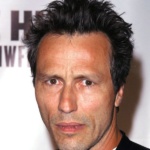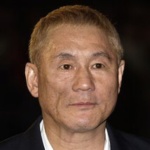Ok, the (cyber)elephant in the room is that this is a film that has garnered more attention for its casting of Scarlett Johansson than it has for the fact it is the latest adaptation of a globally renowned, best-selling, award-winning Japanese phenomenon. The Ghost In The Shell franchise-brand-property behemoth is now on its fourth recycle-boot-quel; the first two anime films, the Stand Alone Complex tv show, the Arise films/tv show, and now this, the Hollywood take.
I don’t mind admitting that I approached this film with caution. After all, the original 1995 anime, directed by Mamoru Oshii, is excellent, and I am a long time fan of it and its source manga, by writer-artist Masamune Shirow. And although director Rupert Sanders has been very clear that his film is not a remake of the 1995 anime, drawing instead from across the multiple versions of Ghost In The Shell, comparison is inevitable. This is a commendable adaptation, with a story that takes familiar elements and fuses them into something, if not entirely new and fresh, then at least different enough from what has come before to warrant its place.

Scarlett Johansson stars as Major Mira Killian (the initials are not an accident, if you are wondering, fans), one of the point operatives in a governmental special forces unit, Section 9, led by Chief Aramaki (played by renowned Japanese actor-director, Takeshi Kitano). She and her partner Batou (striking Danish actor, Pilou Asbæk, sadly not given enough screen time but channelling his inner Rutger Hauer) interfere with an attack on a diplomatic meeting between Dr Osmond (the legendary Michael Wincott, still possessed of his incredible voice and unique screen presence) of Hanka Robotics, and a delegation from the African Federation.
It becomes apparent that a powerful cyber-terrorist by the name of Kuze (played enigmatically by Michael Pitt, adopting a Stephen Hawking-esque machine staccato to his voice) is intent on sabotaging Hanka; it just so happens that Hanka Robotics (CEO’d by the nefarious Mr Cutter, played by Peter Ferdinando) are responsible for the production of cyborg ‘shells’, such as Johansson’s Major. The ensuing plot flits between familiar corporate conspiracy tropes and an arc of self-identity and awareness, marrying neither entirely convincingly, but just about getting by on the sheer gluttony of the film’s visuals. Of note, there are some neat spins on the original characters, that fans will appreciate; we see how Batou gets his bionic eyes, whilst Togusa (played by Chin Han) still has his mullet and his mostly un-augmented humanity, but has lost his vintage revolver to Kitano’s Chief Aramaki (who gets to use it most effectively towards the end of the film).
The film is not overly slavish to its predecessors but the director does plant homage shots and references throughout, and these seamlessly fit into the style of the film; the opening sequence details the creation of Johansson’s character, closely followed by the stunning action set-piece where the Major dives down the side of a skyscraper to burst through a low level window to disrupt an attack – both of these segments are hew very close to their anime counterparts.
The production design is universally eye-catching and inventive, likewise the use of real locations, such as Hong Kong. This is a film that is heavy on the CGI but is so in a way that doesn’t seem out of place, and the director martials his visual style more effectively here than in his previous film, his feature debut, 2012’s Snow White and the Huntsman. This is, after all, a near-future setting where one of the predominant themes is self-augmentation, so for every shot to be augmented with special effects seems appropriate. Having said that, the digital artists have clearly been studying Ridley Scott’s Blade Runner intently, as nearly every cityscape shot in Ghost In The Shell is dominated by a hologram of a giant geisha. The soundtrack lacks the big presence of composer Kenji Kawai’s stunning score to the 1995 anime, but as its own beast, Clint Mansell and Lorne Balfe’s score is effective and evocative, laced with electronica and more traditional elements. The script is brisk and not without pace, but is saddled with leaden dialogue in parts, and the first half of the film struggles to find its thematic focus; a testament perhaps to the production’s multiple writers, none of whom seem to have had past form with projects of a similar nature.
The ending of the film is far too neatly resolved, in that classic three-act Hollywood way, and lacks the devastation, ambiguity and resulting atmosphere of the 1995 anime. This in part, is down to the nature of the film’s antagonists; in the 1995 film, Aramaki’s Section 9 were at odds with rival department, Section 6, a more politicised government division. The absence of Section 6 is filled here, inadequately, by Hanka Robotics, losing in tandem much of the political intrigue of the original anime. The rogue artificial intelligence of the Puppet Master from the 1995 film is likewise here supplanted by Kuze (Pitt), a cyber-hacker with a mysterious past (and a character lifted from the second season of tv show, Ghost In The Shell: Stand Alone Complex). Whilst an interesting and complicated antagonist, who is integral to the Major’s story, he does not emulate the impact of the omnipresent burgeoning A.I of the Puppet Master.

Co-financed by Paramount and its Chinese partners, the Shanghai Film Group and HuaHua Media, this version of Ghost In The Shell has a very eclectic international cast, aside from Johansson, and features notable turns by Juliette Binoche and Kitano (marking the Japanese actor-director’s first appearance in an American film since his 2000 directorial gangster thriller, Brother). Johansson anchors the film with a strong central performance, one of her best to date. Her raw physicality is evident, even in the smallest details. For example, she imbues the Major with an unusual gait to her walk, a lolloping boyish posture of a physical form trying to find its own way and not quite getting there – almost a reflection of the crisis within her Ghost. However, this awkwardness vanishes as she launches into action; the Major is built to be a weapon, of that there is no doubt (as delivered bluntly by Ferdinando’s Hanka CEO, Cutter – an ineffectual presence in the film; Ronny Cox he is not). Johansson is an accomplished screen actress who can at once steer a thrilling action set-piece as much as she can convey the inner turmoil of a character who is enduring an identity glitch of severe proportions. Thankfully the balance in this film is weighted evenly, as if the film-makers understand that part of the appeal of the original anime is just as much its themes of identity, and technology’s impact on our lives, as it is the stunning action.
Not a complete success but by no means the screen carnage many, including myself, feared. This fails in superseding the 1995 film but stands as a fine companion piece. And it will stick with you after viewing, its themes echoing timely in our disenfranchised age. Cyberpunk is back on the menu, and for our main course we have Blade Runner 2049 coming this October…
Video courtesy of: Paramount Pictures
[imdb id=tt1219827]
- The Red Turtle (2017) - 16th June 2017
- Pirates of the Caribbean: Salazar’s Revenge (2017) - 31st May 2017
- Alien: Covenant (2017) - 15th May 2017

Counter-terrorist robot tries to find
Memories lost in her human mind
Breaking news: Scarlett Johansson “deep dives” a Geisha Girl. Fact. A lesbian romp, I hear you cry? Every straight guys fantasy (allegedly)? In 4D, with surround sound, for the price of two pints of lager and a packet of crisps? Don’t choke on your Abernethy. For the reality like the film, which is based on the 1989 Japanese comic of the same name by manga artist Masamune Shirow, is over-hyped and underwhelming.
“Deep dives” (titter ye not) is more to with bytes than bites for it relates to accessing a computer’s memory. The Geisha Girl (Rila Fukushima) is a robotic maid who has been hacked by an unknown entity to assassinate a senior member of one of the world’s leading technological companies Hanka Robotics spearheaded by Cutter by name cutting by nature (Peter Ferdinando). And Scarlett Johansson, with her synthetic body and human brain, is Major Mira Killian who along with her colleagues Batou (Pilou Asbæk) and Chief Daisuke Aramaki (Takeshi Kitano) are tasked with tracking down the unknown entity and “eliminating” him from their enquiries.
The twist, if you can call it that, is that the Major is plagued by hallucinations which give rise to suspicions about what she was told about her past by Dr. Ouelet (Juliette Binoche). Namely, that her parents died in a terrorist attack as they attempted to enter the country via the harbour, her body was damaged beyond repair with only her brain capable of functioning and rather than letting her go gently into that good night Dr. Ouelet brought her back to life as a “ghost in the shell” of a counter-terrorist humanoid. Suspicions which grow when she comes face-to-face with the murderous hacker Hideo Kuze (Michael Pitt) who makes her question not only her past but also who pulls the strings and what are their motives.
The $110 million budget is very much on show in the visual effects department (and no doubt in Scarlett Johansson’s back pocket for it was reported that she was paid something in the region of $10 million), but to quote Shania Twain: “That don’t impress me much.” The effects and the futuristic metropolis are impressive, but far from jaw-dropping; some of the cat-and-mouse chases and shoot-em-up sequences have the look of a video game about them; and the big finale involving a showdown between the Major and “Spider Tank” doesn’t have a leg to stand on!
On the acting front, Juliette Binoche is wasted as Dr. Ouelet and her dry dialogue written by Jamie Moss, William Wheeler (The Reluctant Fundamentalist) and Ehren Kruger (the last three Transformers films) sounds straight out of Holby City. Scarlett Johansson is as striking and beautiful as ever, but so what? Her character’s physiology like her performance like the film by English director Rupert Sanders (Snow White and the Huntsman) is skin deep. And only the Major’s mother Motoko (Kaori Momoi) brings any real heart and soul to proceedings. As I said, over-hyped and underwhelming!
Verdict: 3/5